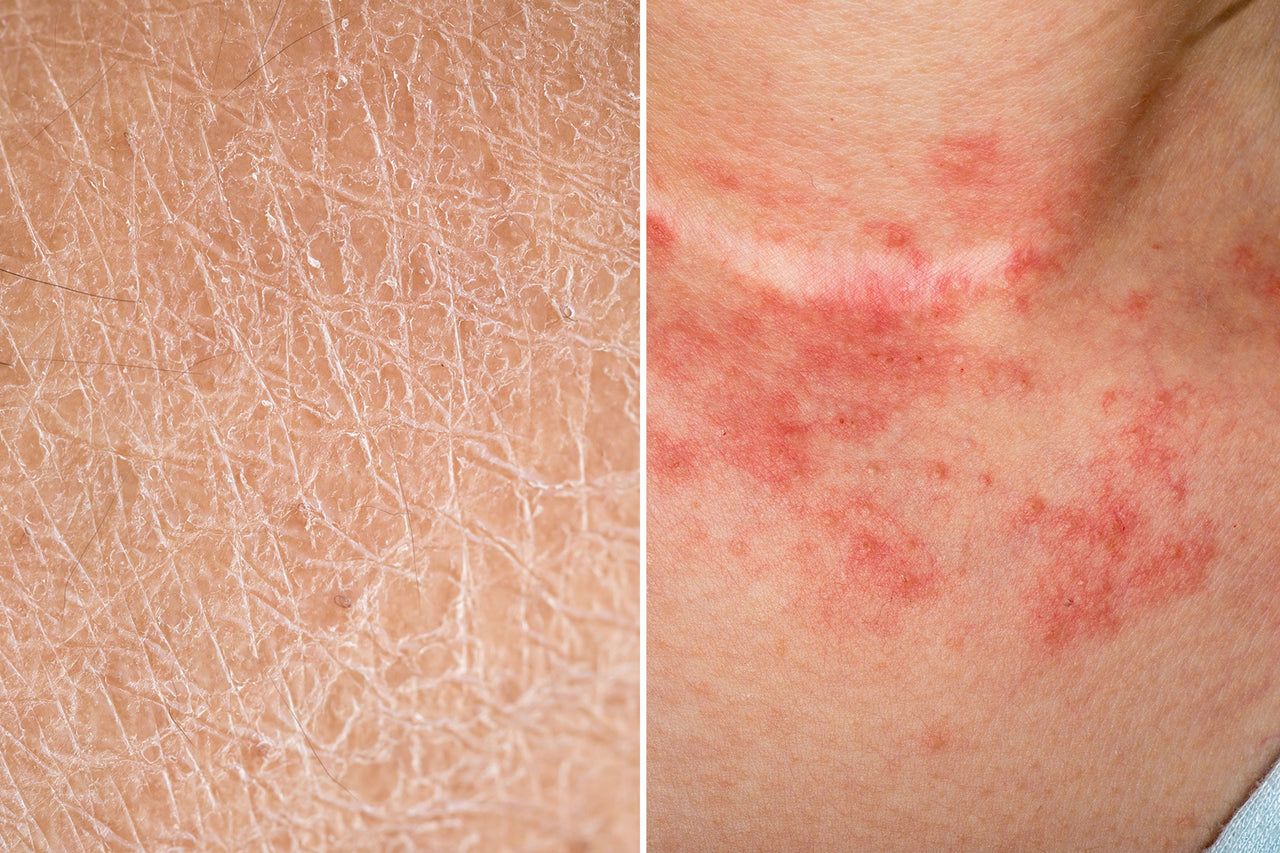Introduction
Dry skin is one of the most common skincare concerns—leaving skin feeling tight, flaky, or uncomfortable. Achieving long-lasting hydration isn’t just about using any moisturizer; it’s about understanding how different types of ingredients work together. Skincare science groups them into three main categories: humectants, occlusives, and emollients. Knowing the difference can help you choose the right products and build an effective routine for lasting comfort.
What Are Humectants?
Humectants are ingredients that draw water into the skin from the environment and deeper skin layers. They keep skin hydrated and plump.
Examples
-
Glycerin
-
Hyaluronic Acid
-
Panthenol
-
Aloe Vera
Best For
-
Dehydrated skin (lacking water)
-
Layering under moisturizers
-
Lightweight hydration in humid climates
⚠ Humectants work best when paired with occlusives to prevent water loss.
What Are Occlusives?
Occlusives are ingredients that form a protective seal on the skin, locking in moisture and preventing water from evaporating.
Examples
-
Petrolatum (petroleum jelly)
-
Beeswax
-
Squalane
-
Shea Butter
Best For
-
Very dry, cracked, or damaged skin
-
Protecting skin in cold or dry climates
-
Night routines where skin loses more water
⚠ Heavy occlusives may feel greasy, so use them sparingly if you have oily or combination skin.
What Are Emollients?
Emollients are ingredients that smooth and soften the skin by filling in small gaps between skin cells. They improve texture and make skin feel supple.
Examples
-
Ceramides
-
Fatty Acids (like linoleic acid)
-
Natural oils (argan, jojoba, meadowfoam seed)
-
Esters & silicones (like dimethicone)
Best For
-
Rough, flaky patches
-
Improving skin barrier function
-
Everyday moisturizers for all skin types
How They Work Together
The most effective moisturizers usually combine all three:
-
Humectants bring water in.
-
Emollients smooth the skin’s surface.
-
Occlusives trap everything in.
This layered approach provides both instant relief and long-term hydration.
Tips for Hydrating Dry Skin
-
Apply Moisturizer on Damp Skin – Helps humectants pull in more water.
-
Layer Wisely – Use humectant serums first, then emollient or occlusive creams.
-
Avoid Over-Cleansing – Harsh cleansers strip natural oils, worsening dryness.
-
Adjust to Climate – In humid weather, lighter humectants may be enough; in winter, add occlusives.
-
Stay Hydrated Internally – Drinking water supports skin from within, but topical hydration is still essential.
Key Takeaway
Hydrating dry skin isn’t about a single “magic” ingredient—it’s about balance. Humectants hydrate, emollients smooth, and occlusives lock it all in. Choosing products with a combination of these helps restore comfort, strengthen the barrier, and keep skin healthy year-round.



